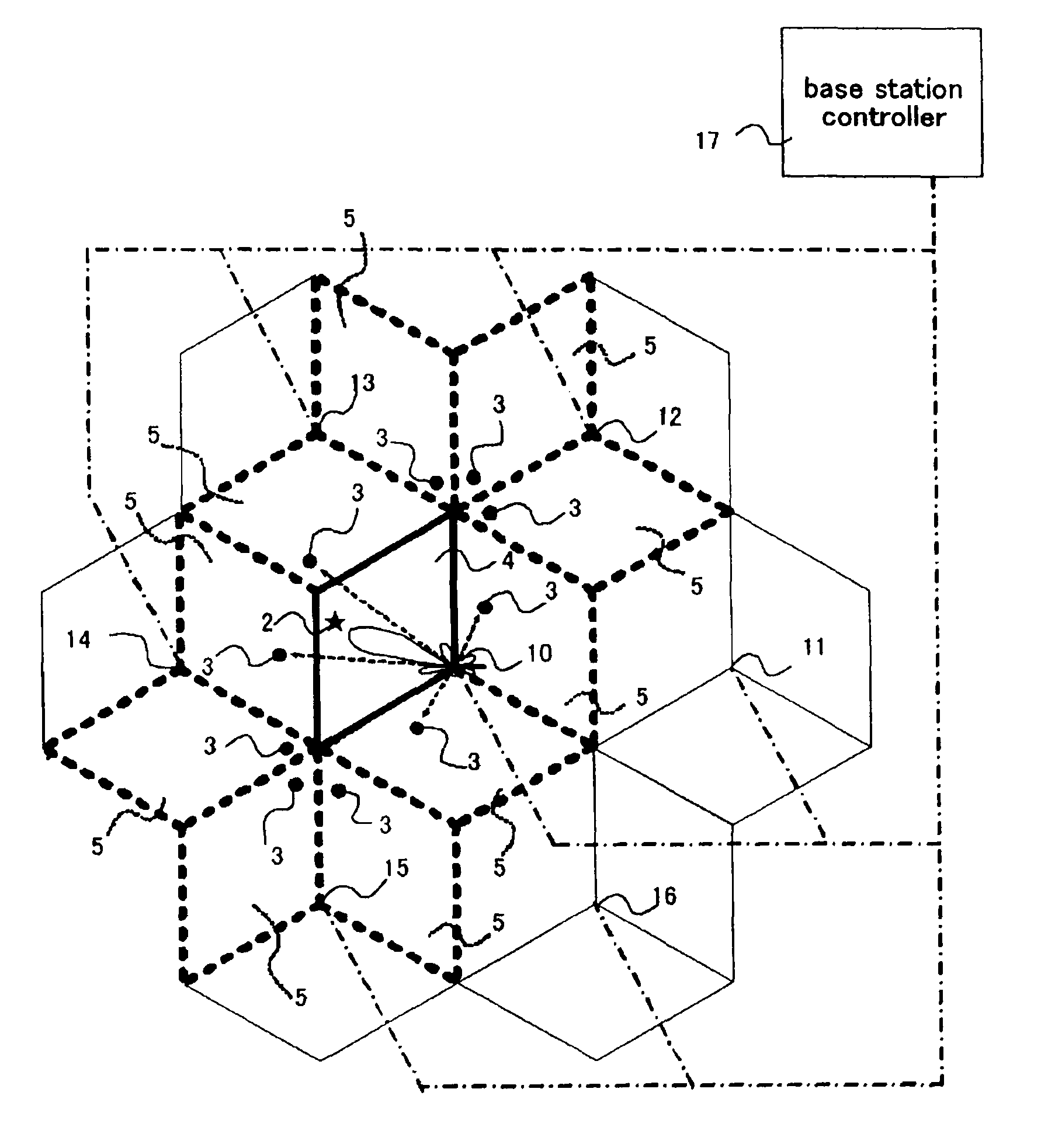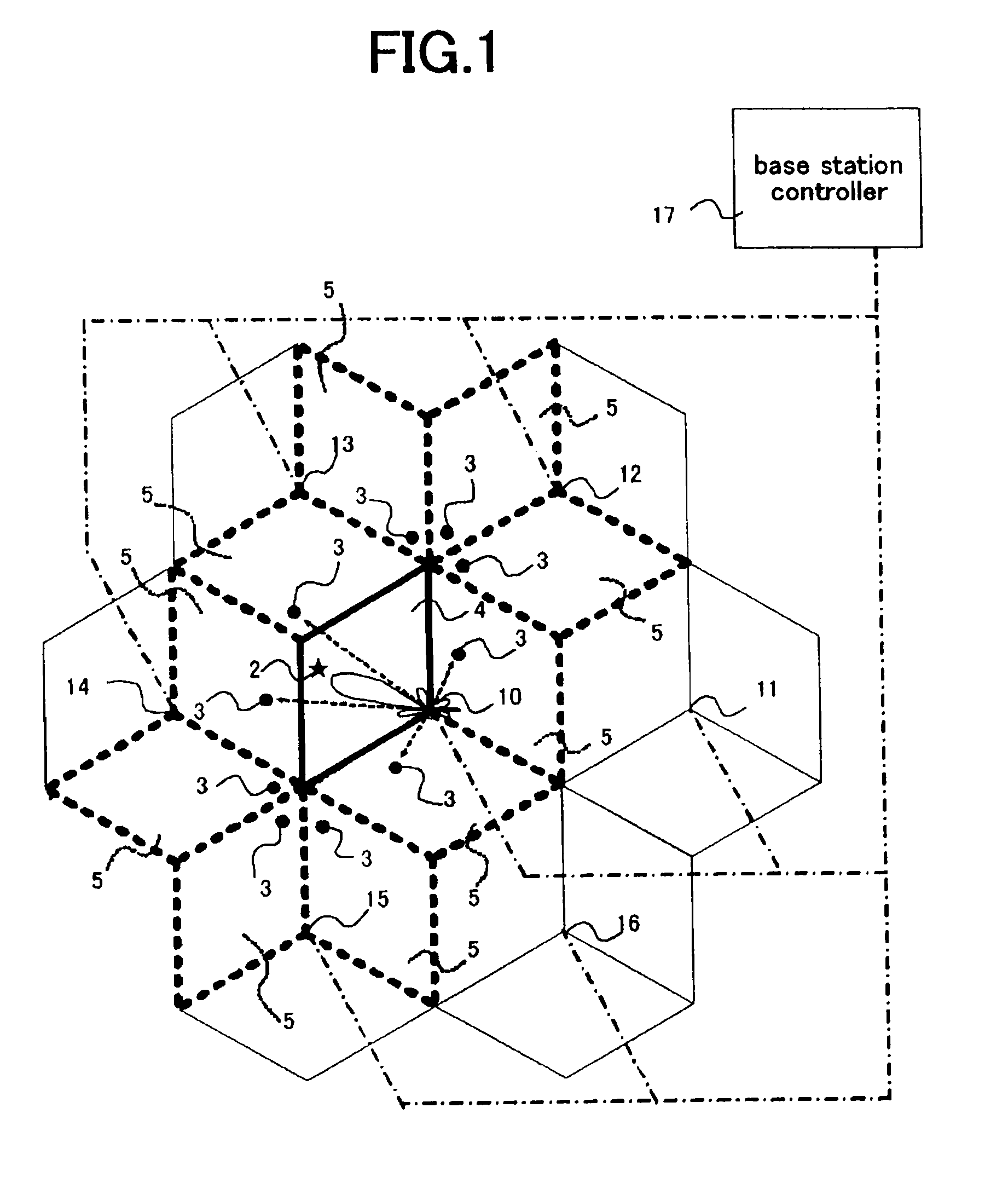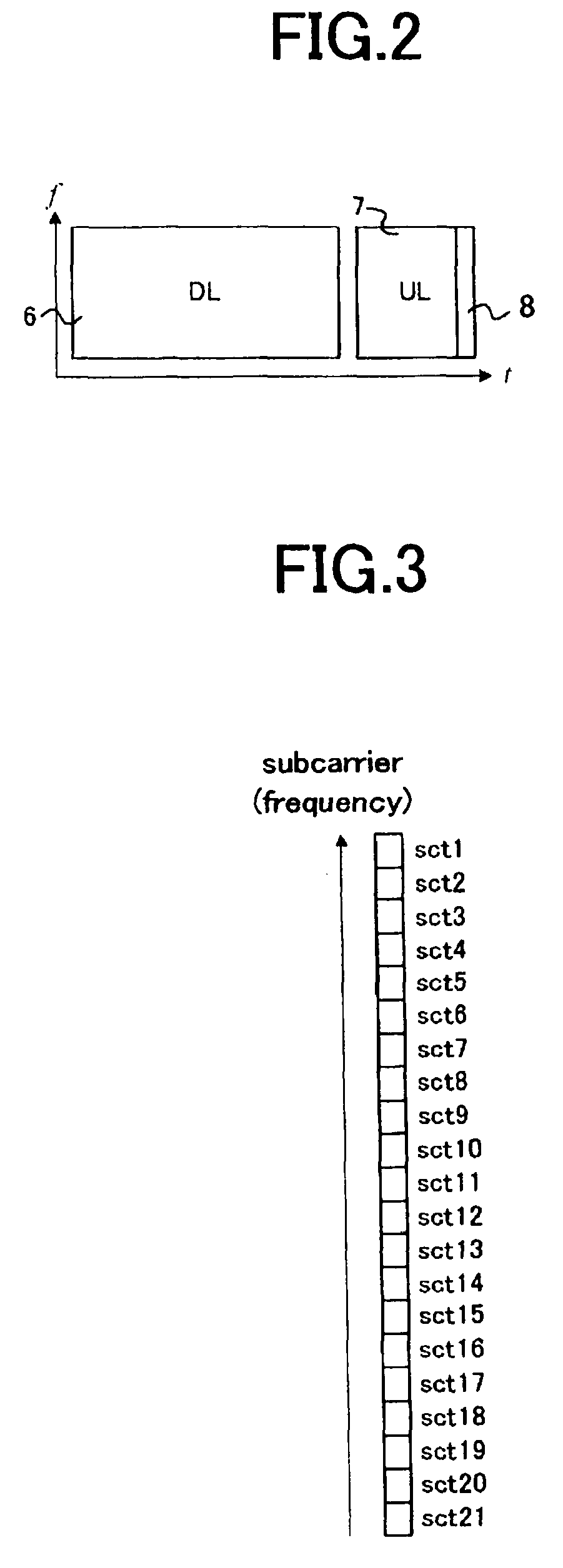Communication system
a communication system and communication technology, applied in the field of communication systems, can solve the problems of fdma (frequency-division multiple access) method using different frequencies, which is obviously disadvantageous in a view point of frequency utilization efficiency, and achieves the effect of enhancing frequency utilization efficiency and avoiding interference from the contiguous area
- Summary
- Abstract
- Description
- Claims
- Application Information
AI Technical Summary
Benefits of technology
Problems solved by technology
Method used
Image
Examples
embodiment 1
[0022
[0023]FIG. 1 is a view illustrating a configuration of a communication system of Embodiment 1 according to the present invention. The communication system has a configuration in which mobile subscriber stations 2 and 3, base stations 10 through 16, and a base station controller 17 are included. The mobile subscriber stations 2 and 3 are terminal devices carried by users and they wirelessly communicate, while being moved, with the base stations 10 through 16. Each of the base stations 10 through 16 is stationarily provided and has a communication area—called as a cell—around itself to wirelessly communicate with the mobile subscriber stations 2 and 3. Furthermore, each of the base station 10 through 16 includes three sector units that wirelessly communicate with the mobile subscriber stations 2 and 3 located in the sectors 4 and 5 that are areas defined by dividing the cell on a 120-degree-azimuth-angle basis. A base station controller 17 is a host device that controls the base ...
embodiment 2
[0053
[0054]FIG. 8 is a control flow chart that illustrates a sequence of an interference avoidance control of Embodiment 2 according to the present invention. When a location of a mobile subscriber station is registered or a mobile subscriber station starts to communicate, the base station controller informs respective base stations of information about adjacent base stations and a sounding carrier number corresponding to the mobile subscriber station. Receiving the information, each base station informs mobile subscriber stations in its sector of a sounding carrier number and spread code numbers. Receiving the numbers, each mobile subscriber station uses the sounding carrier to transmit a channel estimation signal.
[0055]Each base station selects mobile subscriber stations according to reception levels of channel estimation signals from mobile subscriber stations in the other sectors, at every divisional timing of the wireless frame on time-division basis at which the combination of...
embodiment 3
[0058
[0059]FIG. 9 is a control flow chart that illustrates a procedure of interference avoidance control of Embodiment 3 according to the present invention. When a location of a mobile subscriber station is registered or a mobile subscriber station starts to communicate, the base station controller informs respective base stations of information about adjacent base stations and a sounding carrier numbers corresponding to the mobile subscriber station. Receiving the information, each base station informs mobile subscriber stations in its sector of a sounding carrier number and spread code numbers. Receiving these numbers, each mobile subscriber uses the sounding carrier and the like to transmit a channel estimation signal and scheduling information.
[0060]Channel estimation signals and scheduling information can be transmitted from a lot of mobile subscriber stations, for example, by transmitting known pilot information and scheduling information spread by a spreading-code method.
[006...
PUM
 Login to View More
Login to View More Abstract
Description
Claims
Application Information
 Login to View More
Login to View More - R&D
- Intellectual Property
- Life Sciences
- Materials
- Tech Scout
- Unparalleled Data Quality
- Higher Quality Content
- 60% Fewer Hallucinations
Browse by: Latest US Patents, China's latest patents, Technical Efficacy Thesaurus, Application Domain, Technology Topic, Popular Technical Reports.
© 2025 PatSnap. All rights reserved.Legal|Privacy policy|Modern Slavery Act Transparency Statement|Sitemap|About US| Contact US: help@patsnap.com



